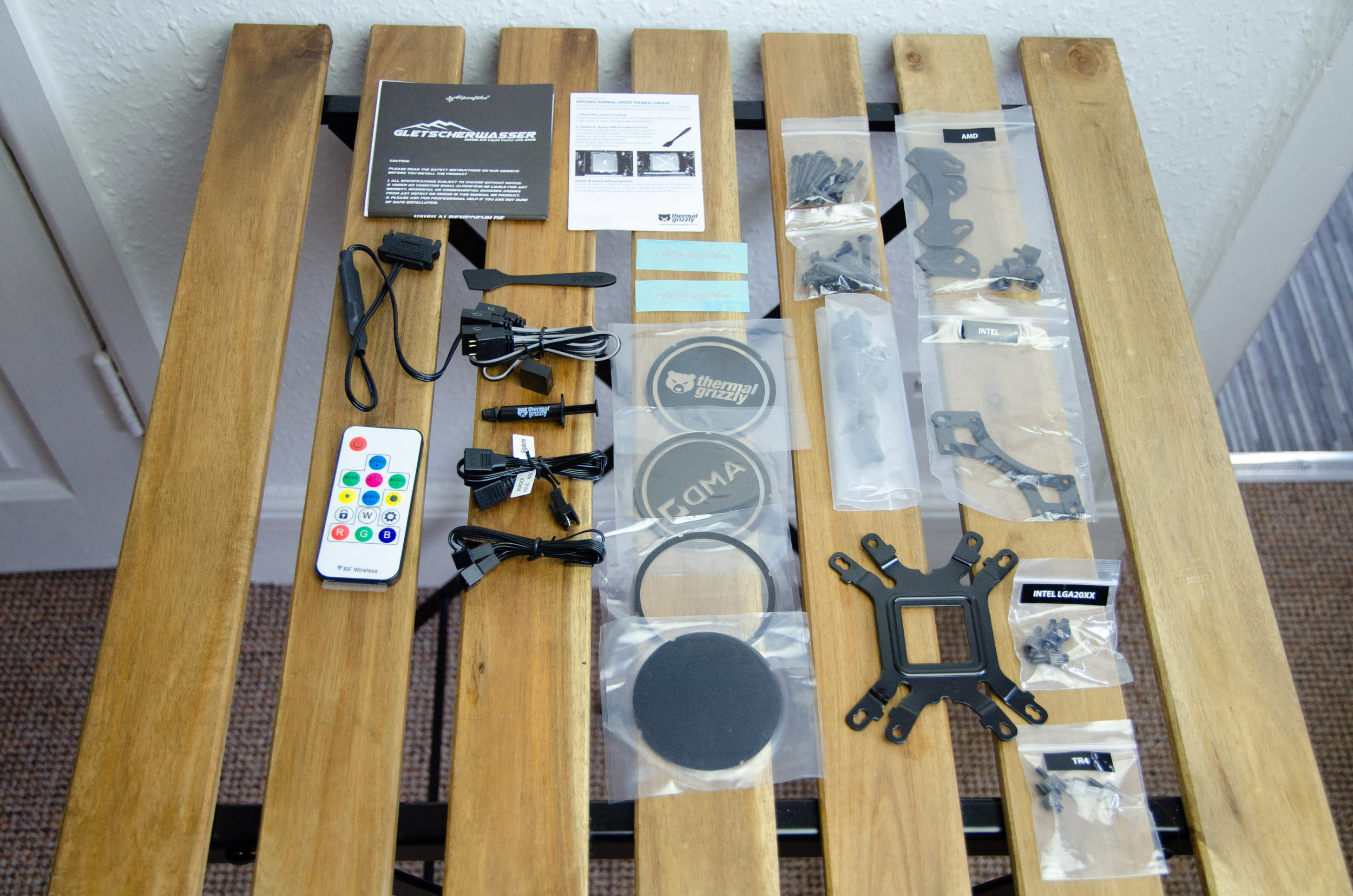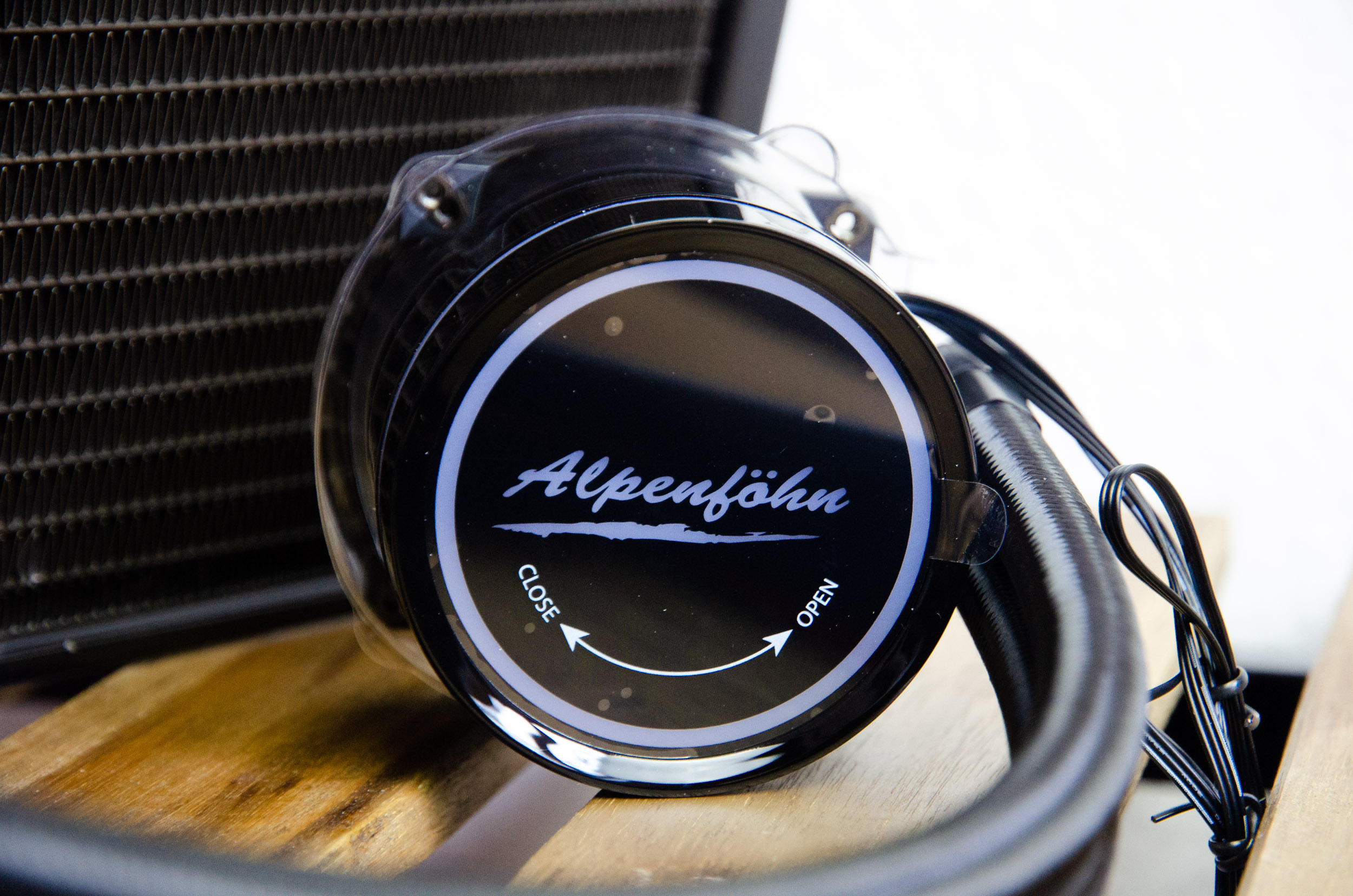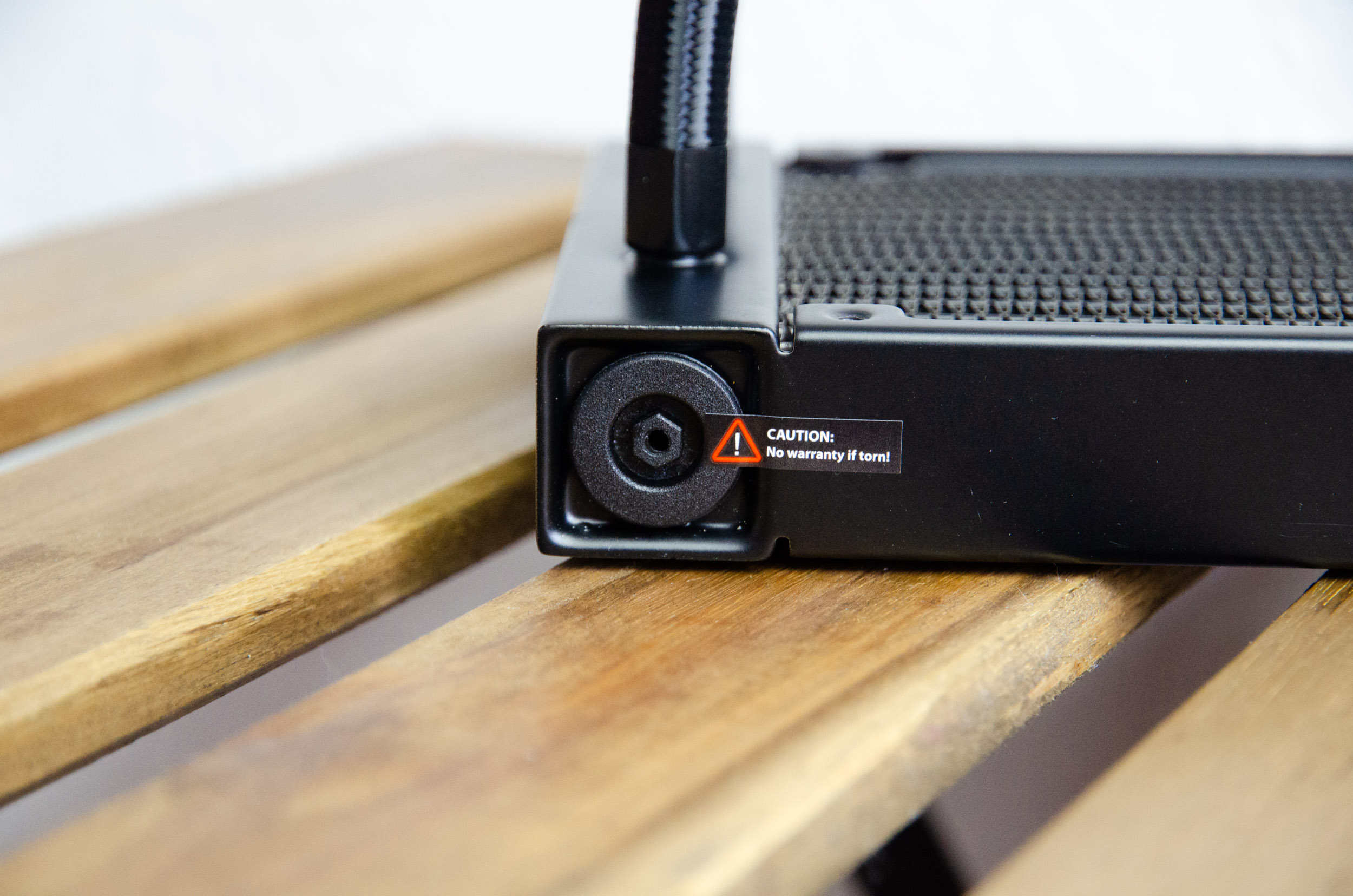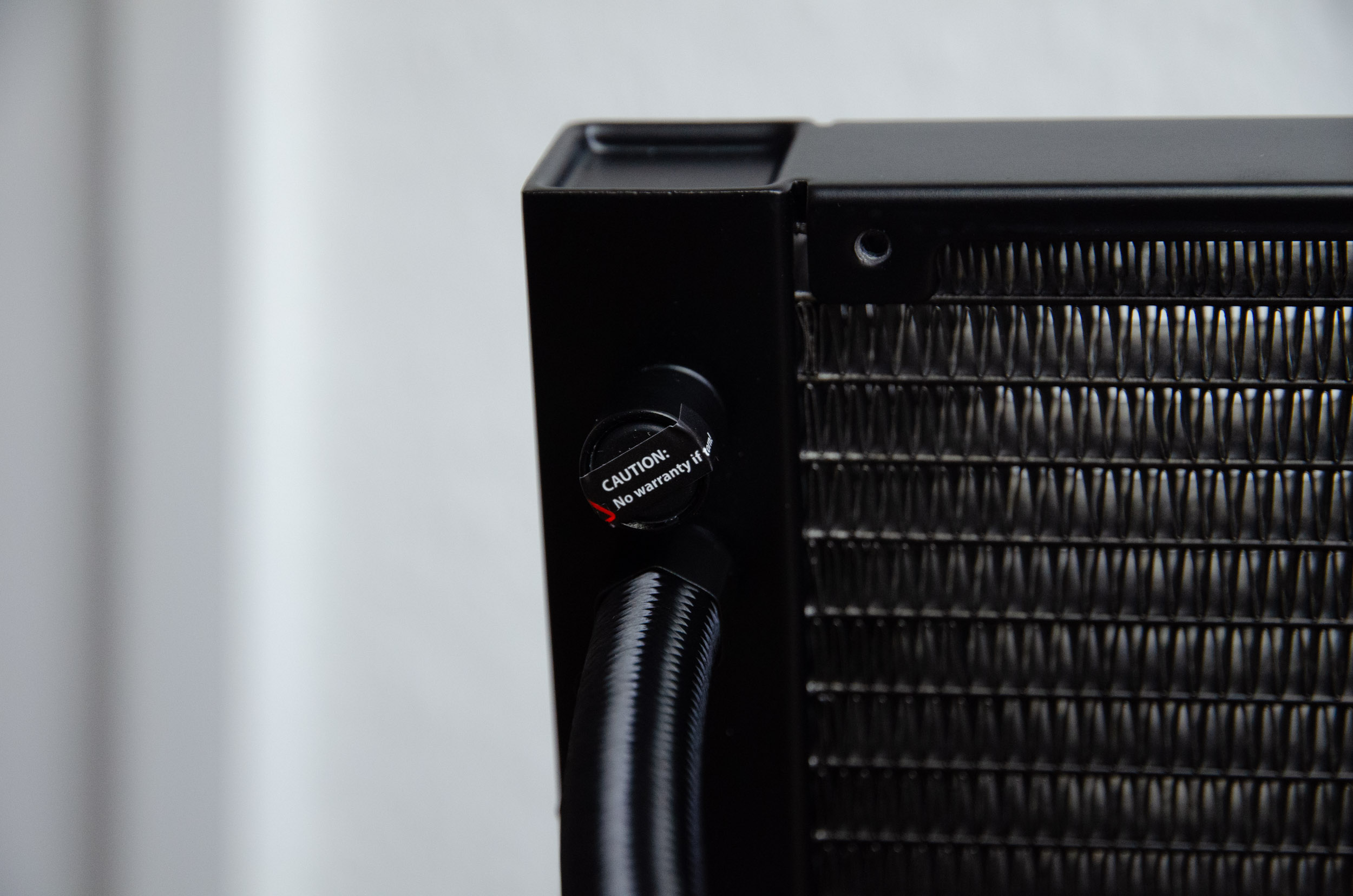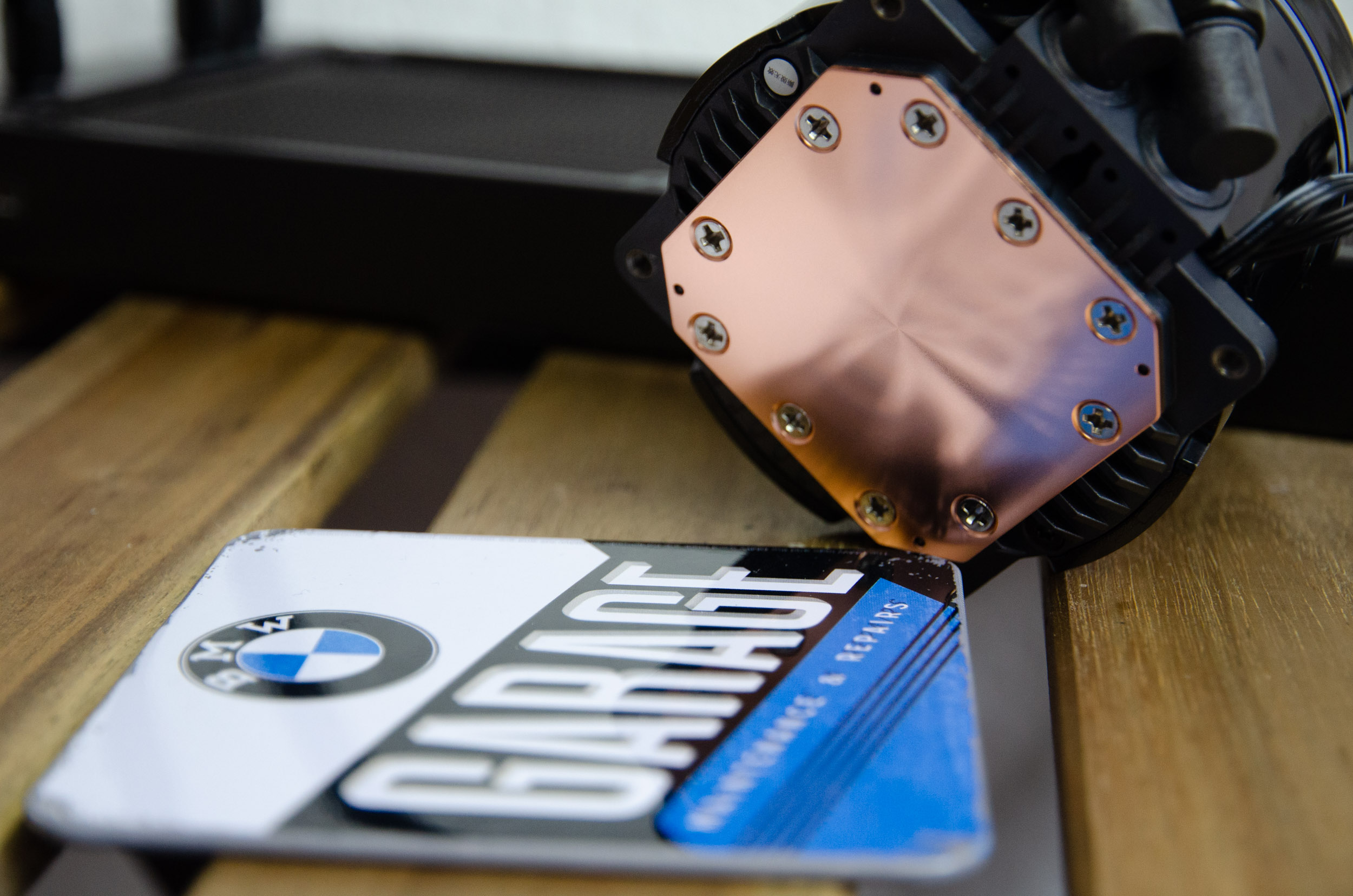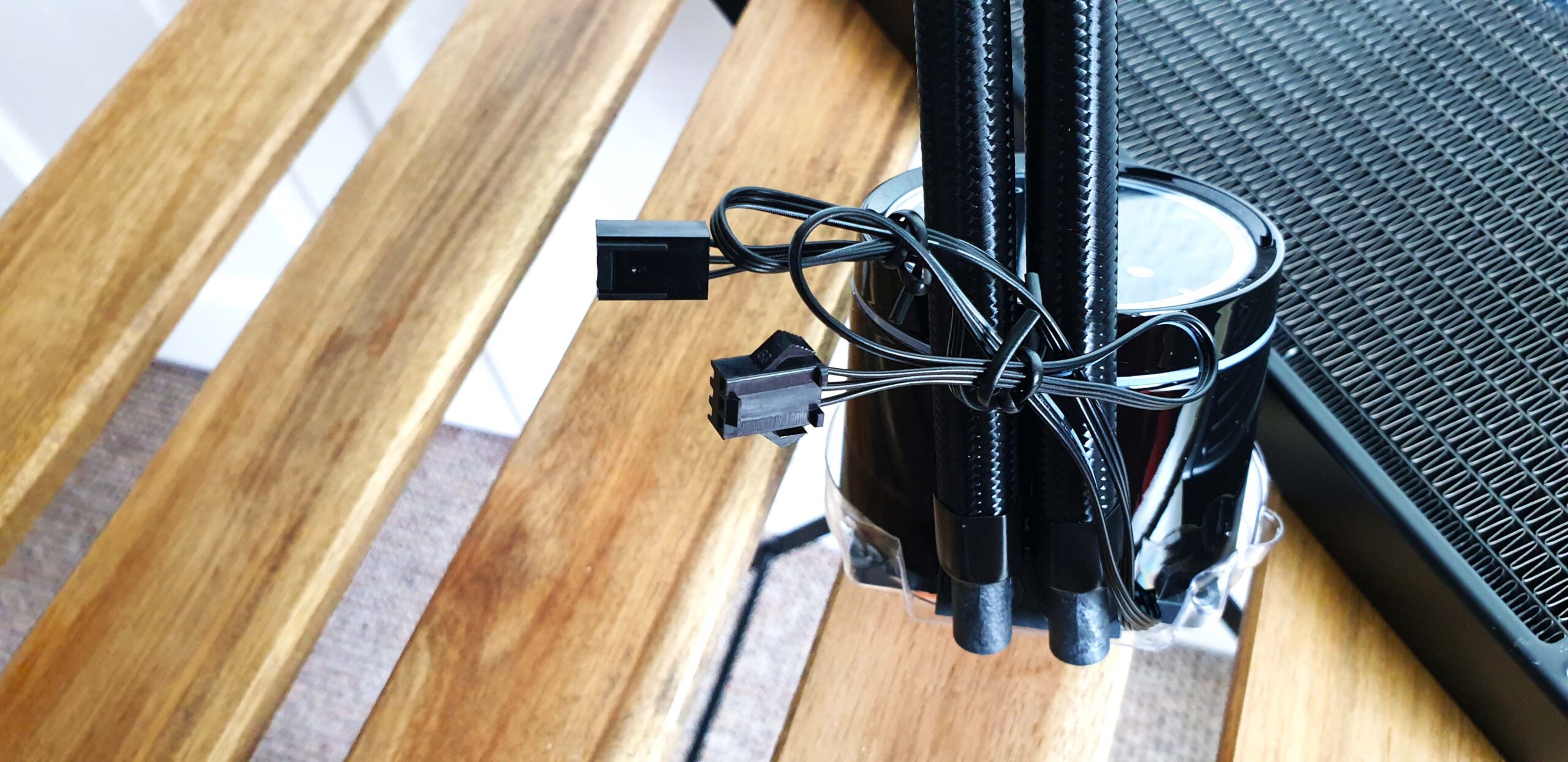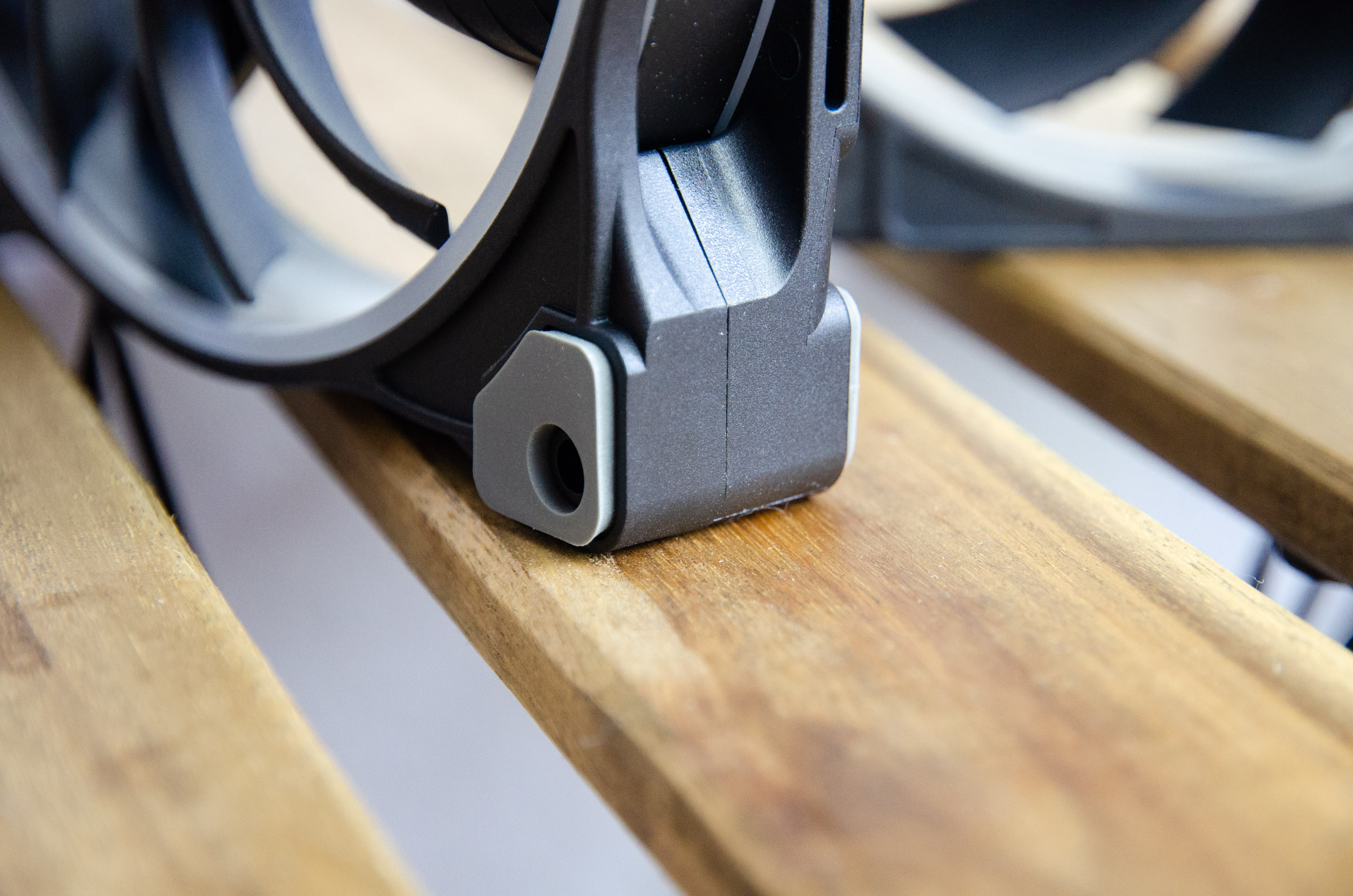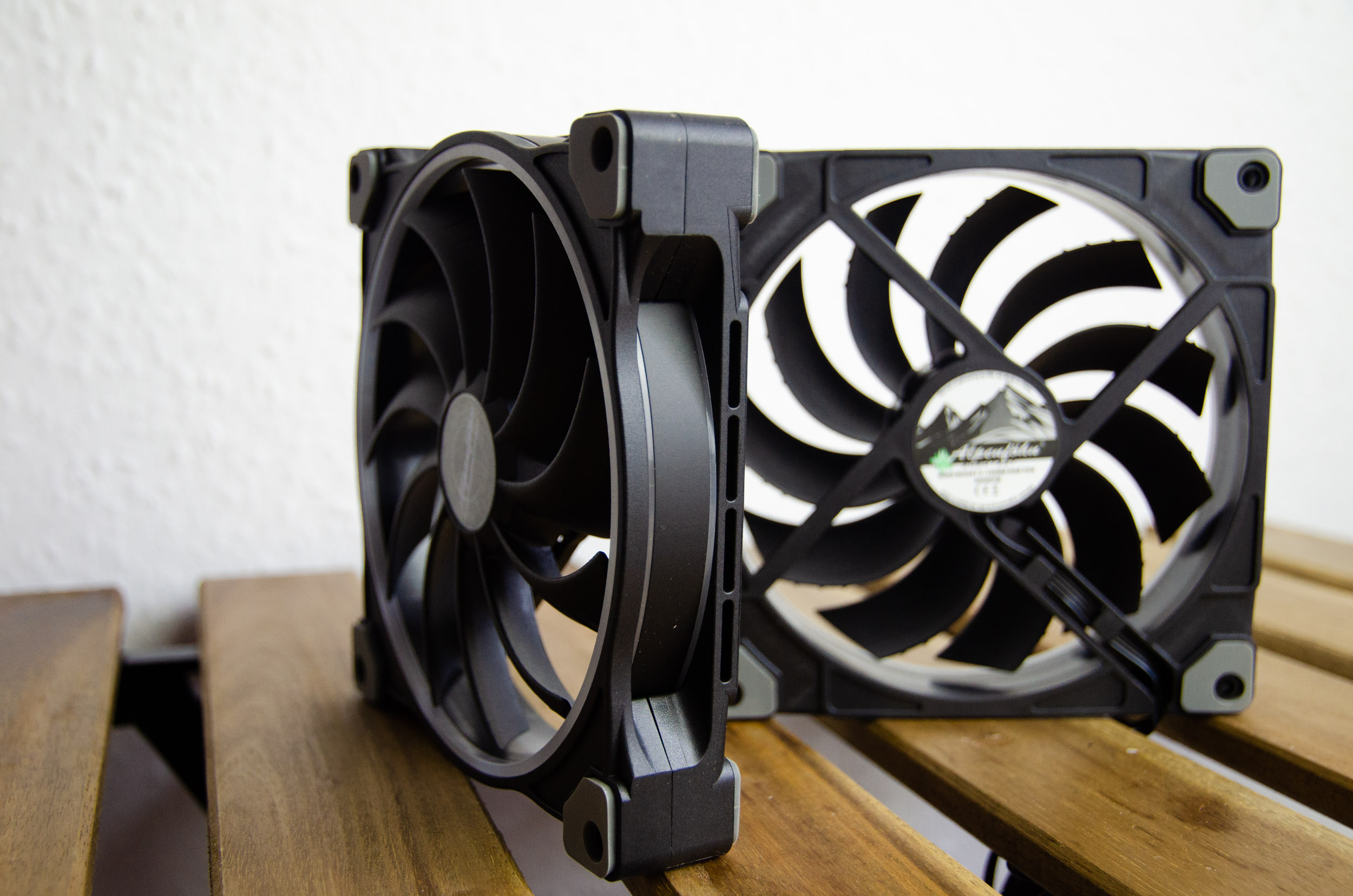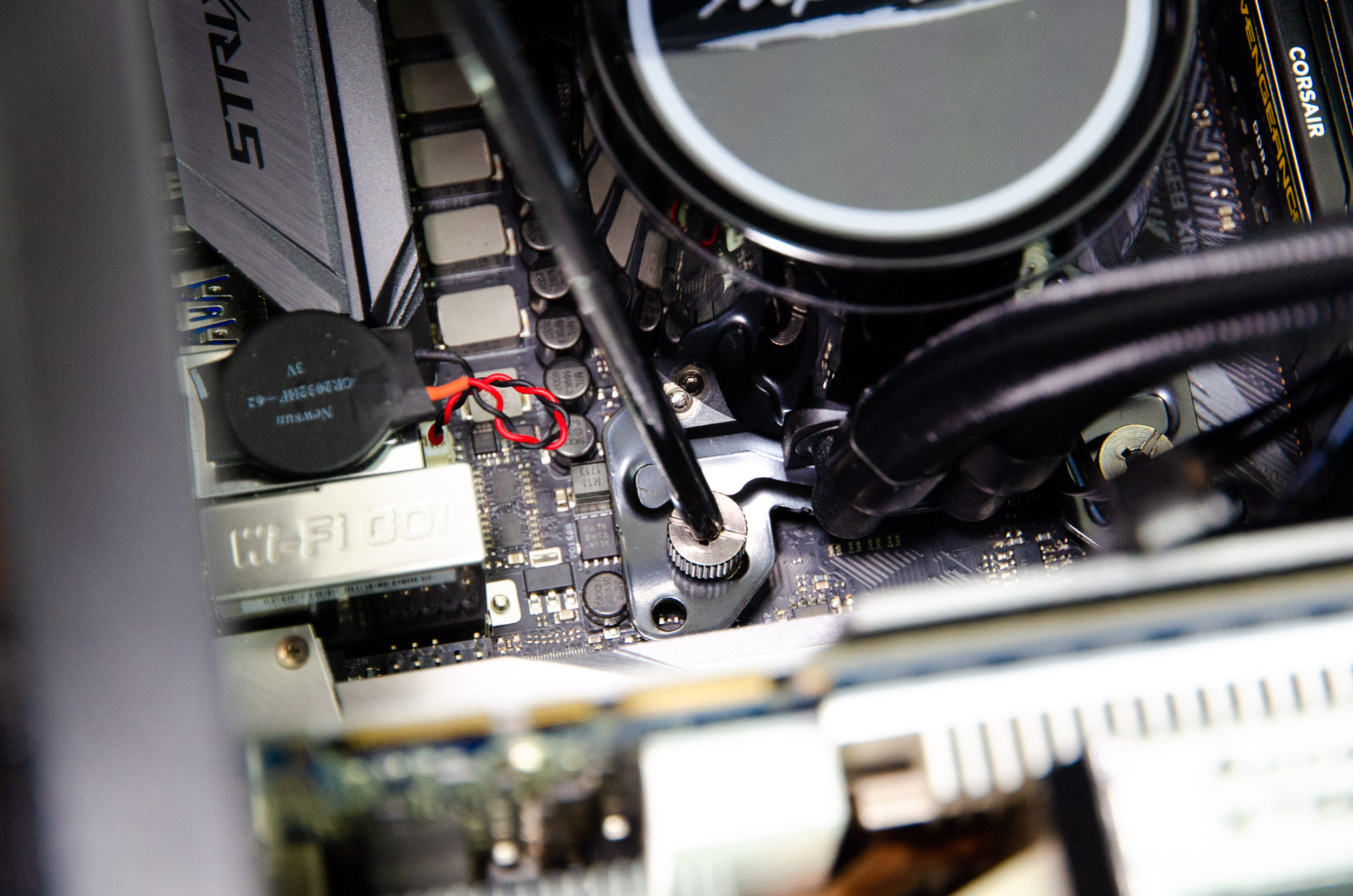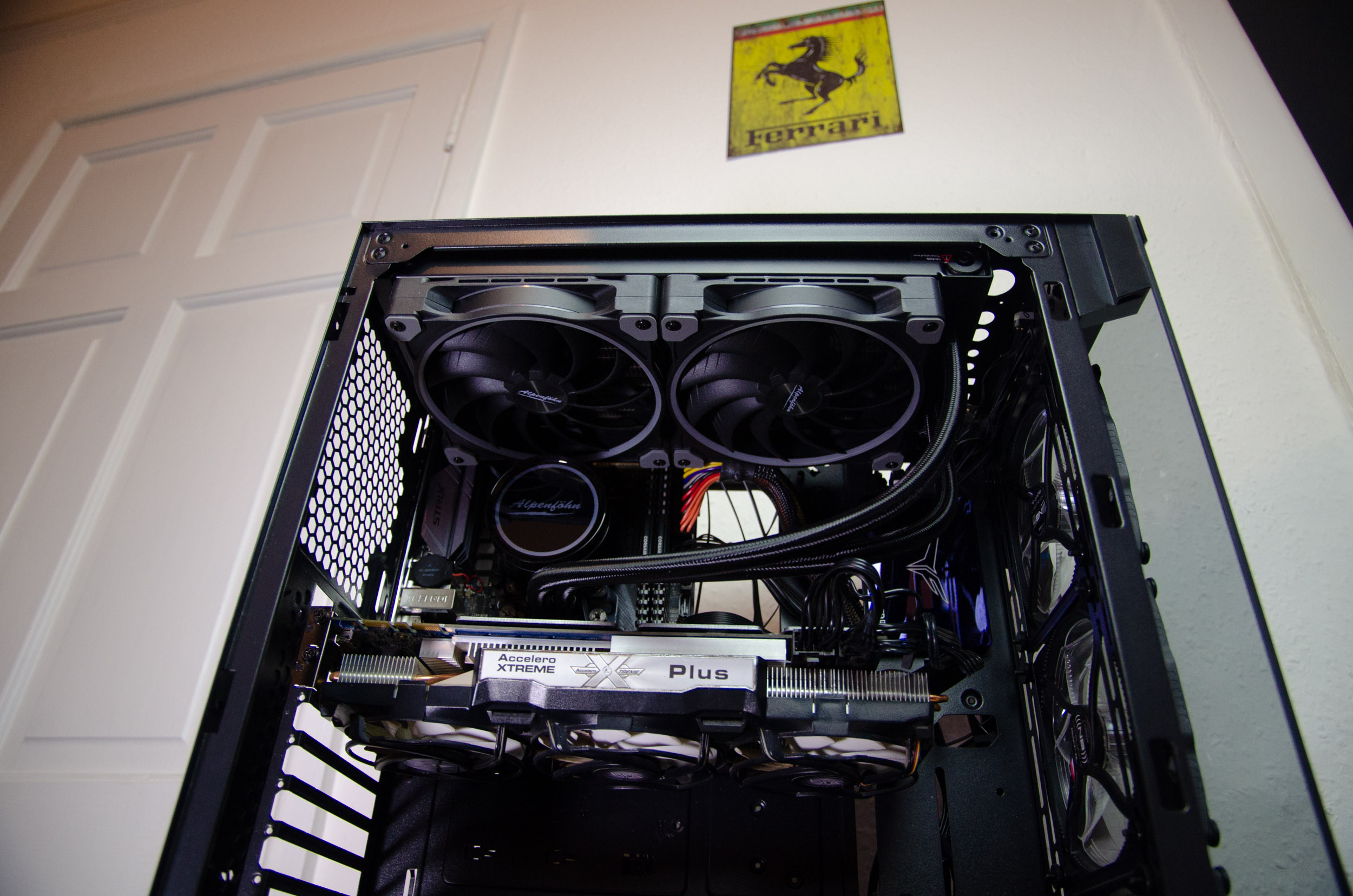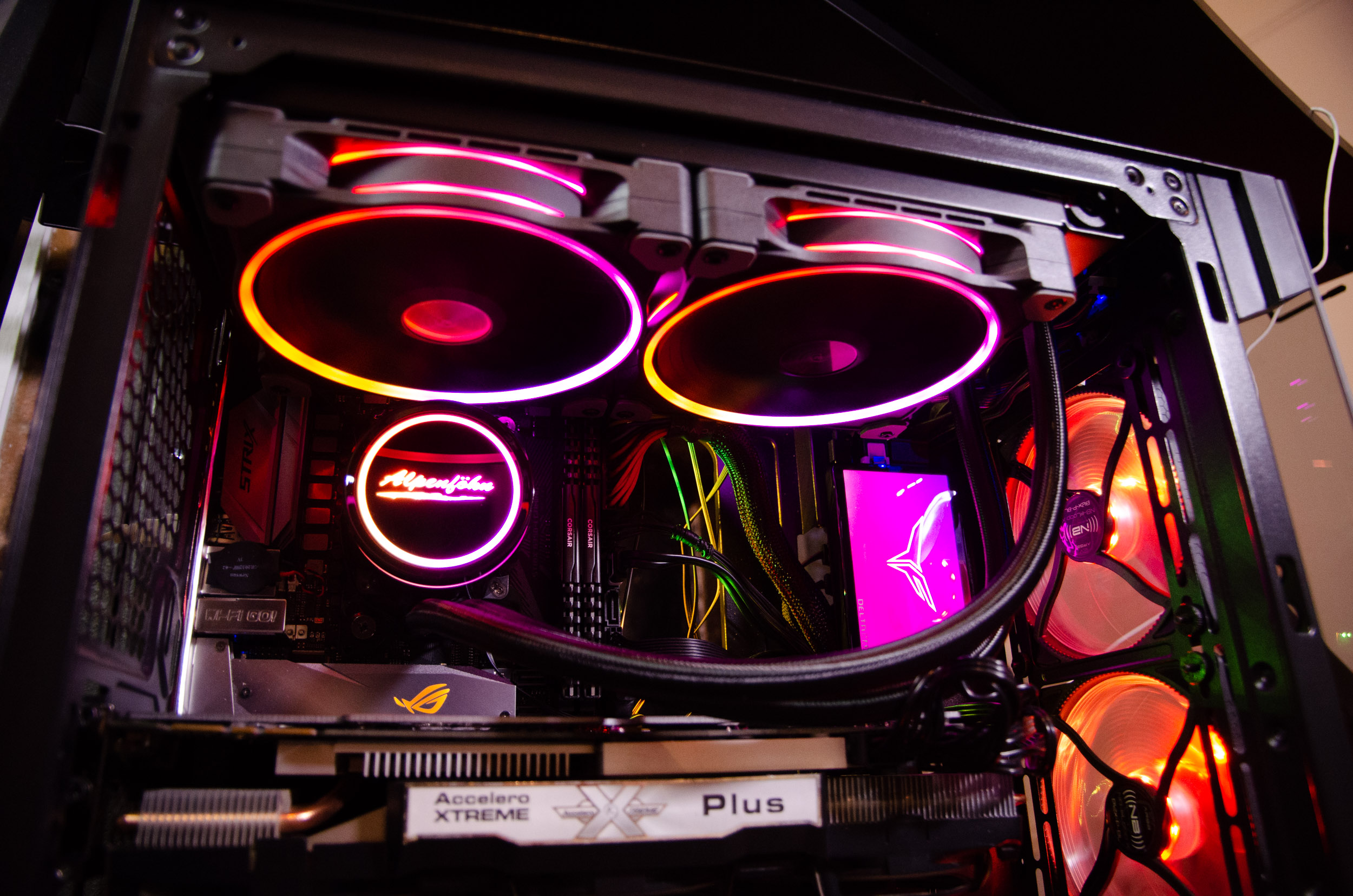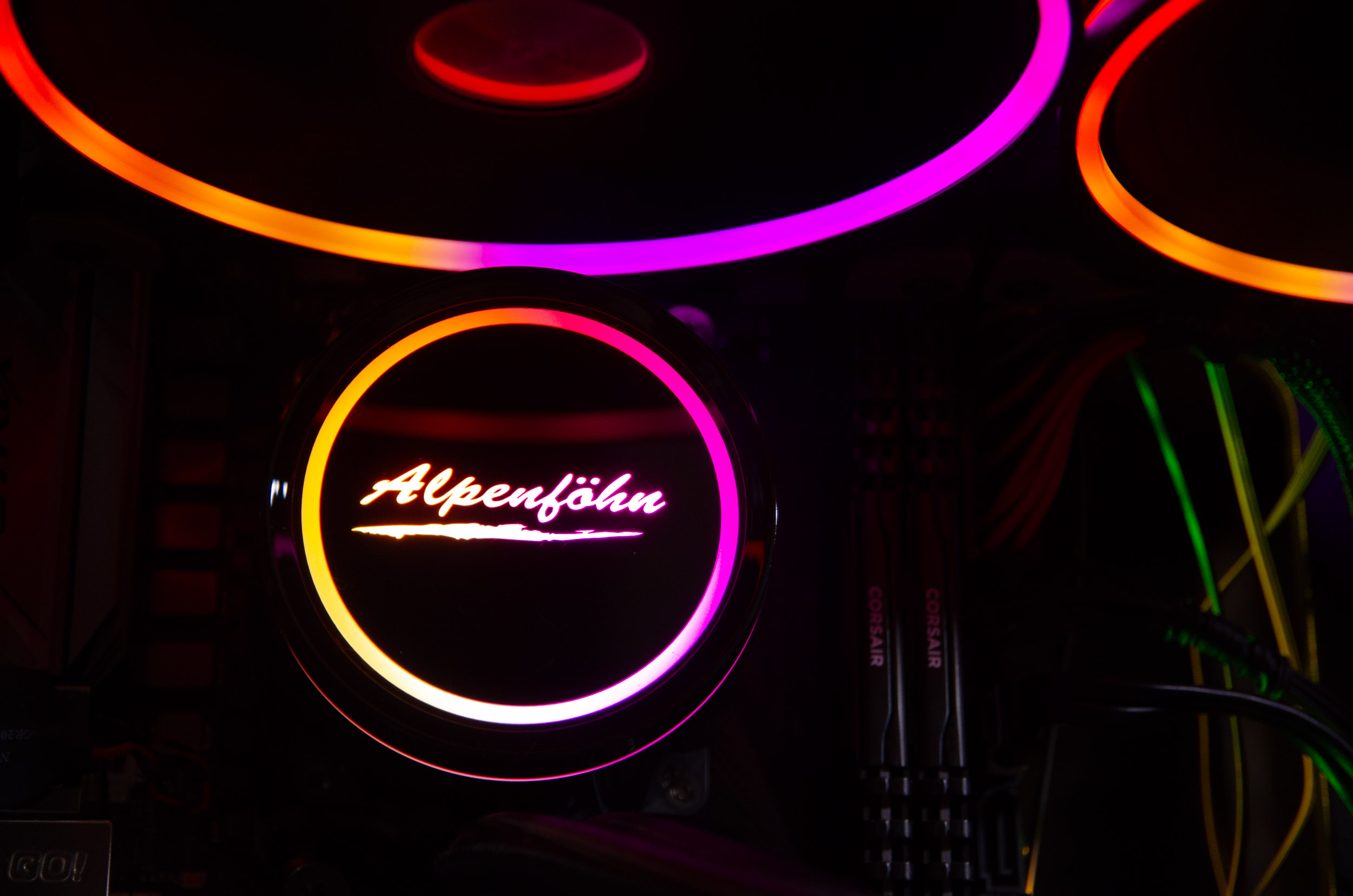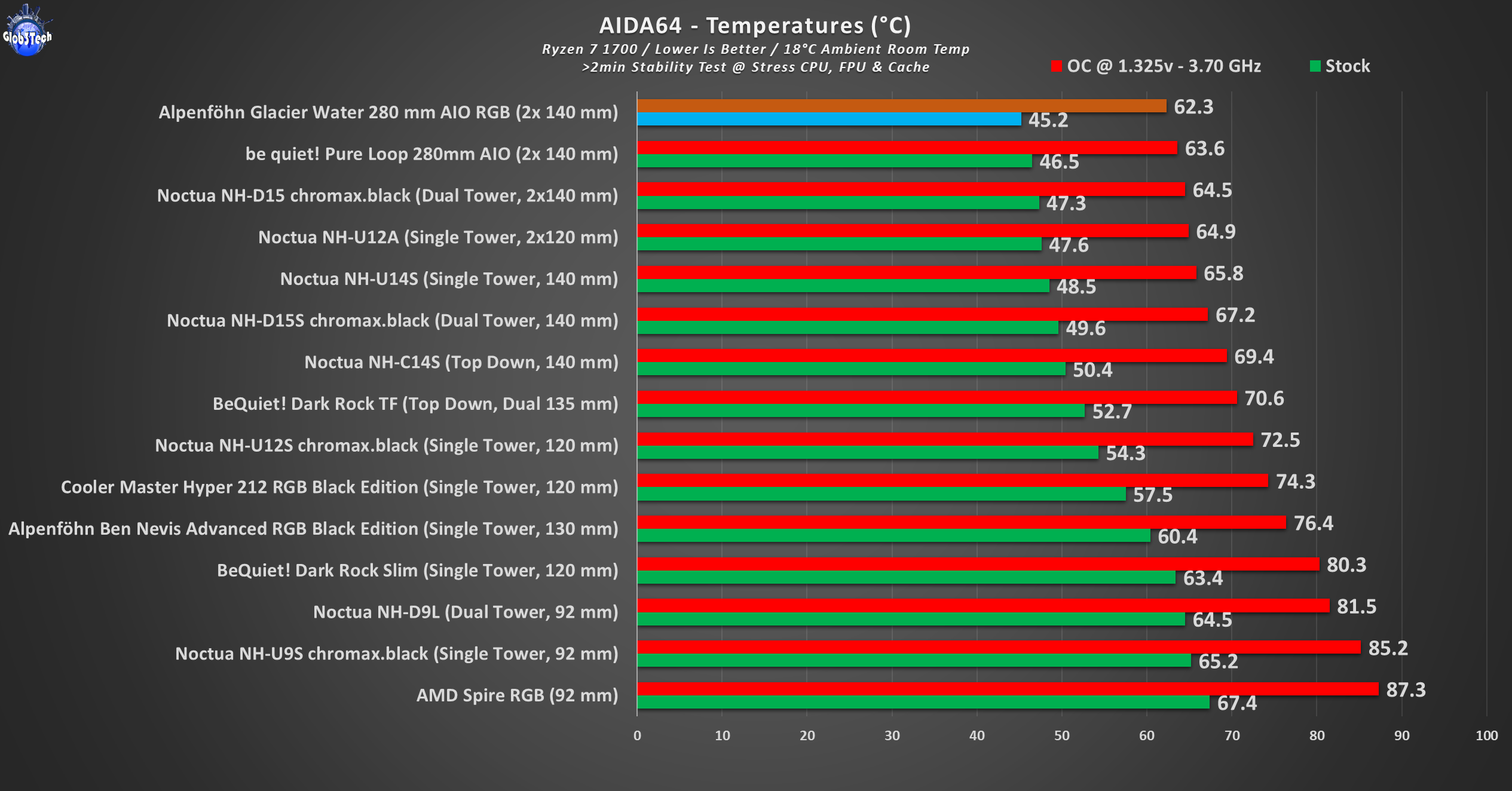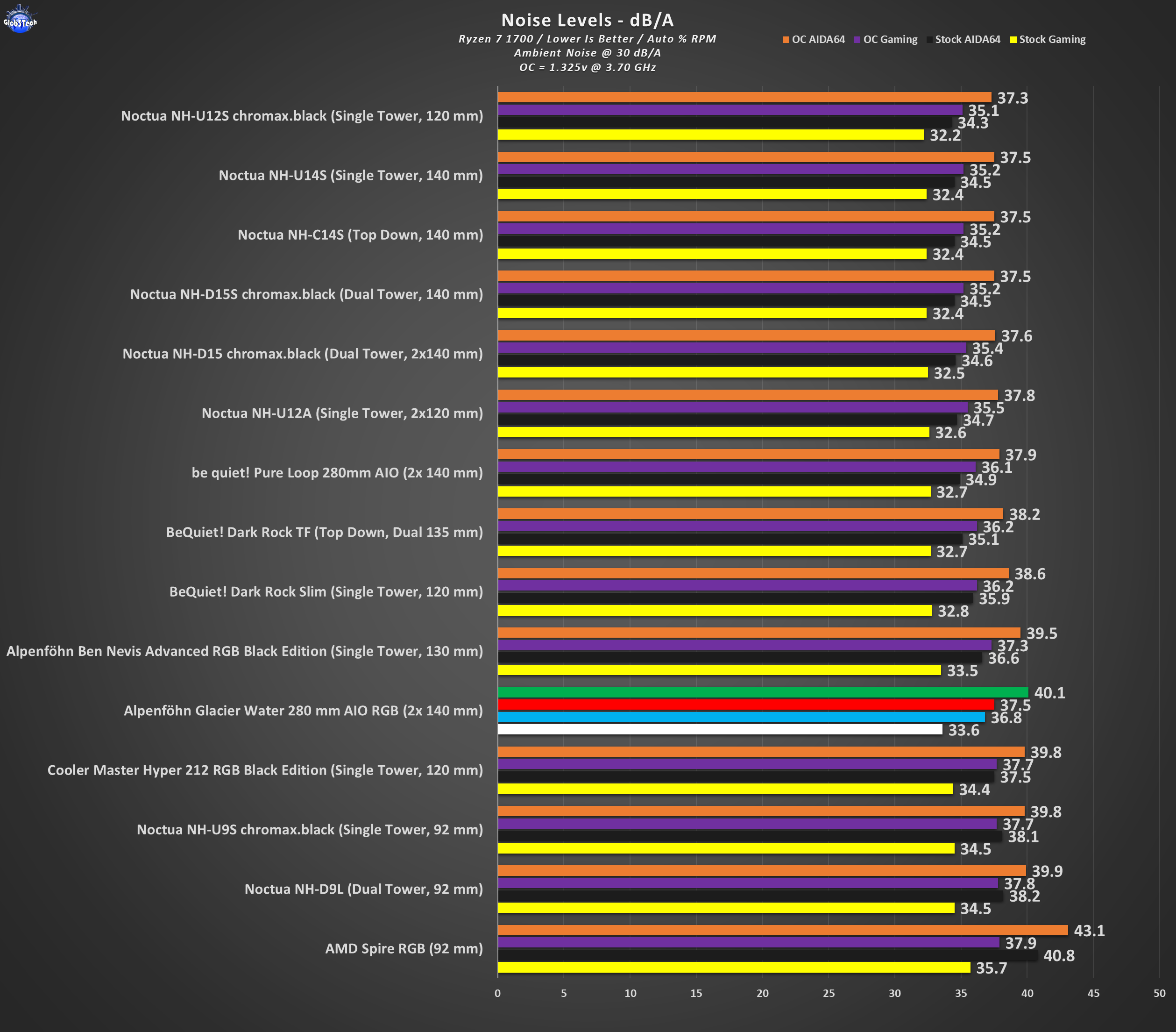
We have another AIO in our hands to play with and this one is from Alpenföhn. They were teasing this new AIO series of theirs for some time now and I must say that the wait has paid off – presenting the “Gletscherwasser” (Glacier Water) premium AIO water cooling solution with addressable RGB lighting. Even more interesting is the fact that this solution has been done in cooperation with the overclocking legend novel Roman “der8auer” Hartung.
Coupled with the Wing Boost 3 ARGB fans as well as Thermal Grizzly Hydronaut heat transfer compound, these should offer a nice round package with superior thermal performance and silent operation. As for a party trick, you can even change the logo plates thus your imagination is the limit. Let’s dive in !
Alpenföhn is a company which manufacturers cooling components for IT systems, which started its activity in 2008. The Alpenföhn line includes CPU coolers, fans and accessories which include: thermal compound, storage cooling systems and fan mounting systems.
The Alpenföhn brand was created by the company EKL AG, founded in 1995, it is a company specialized in manufacturing industrial cooling solutions.
Prices and Availability
The 280 mm (that we have for testing today) is out of stock for now in the UK on Amazon and Overclockers.co.uk and we will update the prices once these are available. It should retail for around £169.99 which is really good value for money considering its specs and potential. Below we have the 240 and 360 variants.
*25.03.2021 Update – Don’t forget to check the video review as well !
Presentation and Specifications
* Courtesy of their website.
Pump
The diamond ground copper base plate of the pump unit possesses large area micro-channels to dissipate the waste heat of the CPU into the cooling circuit quickly and efficiently. Pump speeds between 1200 rpm and 2600 rpm offer an extremely balanced performance spectrum for every aspect of your requirements. Decide yourself whether overclocking or virtual silence is on your mind. An intelligent cooling routing in a two-chamber design within the pump housing offers noise reduction whilst increasing performance and longevity in comparison to conventional designs. The finish of the injection molded pump housing and cover is enriched by piano lacquer.
Radiator
Glacier water contains an aluminum high performance radiator. For enhanced safety within your system, the radiator uses a “leak-free” design. In the very unlikely case of a leak within the cooling system, the pressure inside the system is regulated to avoid any loss of coolant. Therefore your hardware is always SAFE.
Heat transfer compound
The included Thermal Grizzly Hydronaut paste with its excellent thermal conductivity can be used for normal as well as overclocking applications. It was developed specifically for large area applications as for example found in water cooling systems. Main advantages: No dry-out, silicone free and electrically insulating.
Wing Boost 3 ARGB
With its 16.8 million colors the Wing Boost 3 ARGB offers numerous possibilities to put your case into the right light. The addressable RGB LED lights are integrated into the fan housing and vaguely show the impeller as well as shine stylishly to the outside.
By means of a new blade angle the rotor has been optimized to lower speed in order to achieve in comparison with other fans a significantly higher volume flow, total pressure and exit speed at the same speed. Thanks to the Wing Boost 3 technology, air turbulence at the impeller is greatly reduced to ensure even quieter operation at full fan speed. High-quality IC motor control minimizes electrical noise, especially in the low speed range, to a minimum.
By using the fluid dynamic bearing, we can realize a low-vibration and whisper-quiet operation of the fan.
The de-vibration rubbers reduce the often annoying noises, which are transmitted by the vibrations of the fan to the case, by their excellent anti-vibration characteristics to a minimum.
Do it yourself!
Realize your dream project with the included logo plates for the pump unit. All plates can be oriented freely on a 90 ° pattern. Do you require more creativity? The clear logo plate can be customized to your choice: Ideal for own logos, clan motives etc. Simply twist the bayonet cap on the pump head, swap the logo plate and close the cap. That’s all? Yes – Wow, that was easy.
Extensive accessories
The included remote control allows the use of glacier water even in systems, which do not have connectors for addressable RGB components. The numerous effects, as well as speed and brightness of the glacier water and Wing Boost 3 ARGB can be controlled synchronously via remote control and receiver. All required cables as well as ARGB splitter and PWM splitter are included in the set.
Compatibility:
* Intel® LGA: 1200, 1150, 1151, 1155, 1156, 1366, 2066, 2011-v3, 2011
* AMD: TR4, sTRX4, AM4, AM3 +, AM3, AM2 +, AM2, FM1
Visual Inspection
The front of the packaging illustrates the actual product with a vivid colour palette to emphasise the RGB implementation. The labelling is minimal but effective and thus easy to follow. The most important bits include the fact that this AIO (series) was made in collaboration with the famous overclocker “der8eur” and that it comes with the Thermal Grizzly Hydronaut grease.
On the back we have the full specs for the radiator, pump and fans. Also notice the hand signature of a quality control agent under the bar code. Very nice!
This side houses a list of all of the main highlights and the socket checklist. It’s impressive to see that it even supports the big Threadripper sockets as well.
The opposite side has a quick diagram with the overall radiator and pump dimensions.
Wait, there’s more sides – here we have a quick rundown regarding some of the most important features.
Finally, this side just re-lists the socket compatibility list in a more visual way. It’s very nice to see even the good old LGA1366 is supported for those that want to push those epic six core XEONs on the legendary X58 platform to the absolute limit.
Now this is how you package and protect an AIO ! This reminds me of those professional military-grade Pelican custom cases. Everything else is divide into their own boxes and labelled accordingly.
Let’s start and get the accessories out of the way. Alpenföhn kindly provides even an RGB remote control and SATA powered sensor system just tot make sure you can enjoy the addressable lighting show on older platforms. Otherwise, you get Y-adapters that will let you connect directly to your motherboard’s 5v RGB header and control everything via software.
Then the instruction manual is straight to the point and very easy to follow. All of the installation parts are dividend into separate socket labelled zip lock bags.
This is where you can take over and be creative with the look of the pump because you can replace the main logo plate with these 4 extra ones.
This is the premium thermal paste from Thermal Grizzly which even comes with branded spatula for ease of aplication.
Behold the all sleek black radiator. The exact dimensions are 322 x 138 x 27 (L x W x D) and it’s made from aluminium.
The pump’s operatin RPM is between 1200 and 2550 RPM and it’s powered via a 3 pin plug. This is the stock lid and the top film protector shows how to replace it by just rotating the top ring cap.
One twist later, you can now access the plate.
The overall build quality is excellent with no flaws or unfinished areas.
The diamond ground copper base plate of the pump possesses a large area of micro-channels to dissipate the waste heat of the CPU into the cooling circuit quickly and efficiently.
The finishing is very smooth and you can barely see the circular machining marks.
It takes power from the motherboard via this 3 pin plug while the other port is for the RGB.
Moving our attention to the tubes which are 41 cm long and are perfectly sleeved and thus ooze of premium and quality materials.
Finally, the Wing Boost 3 ARGB fans 140 mm fans are build on fluid dynamic bearings and will spin between 500 to 2000 RPM. They will push up to 175.6 m3/h of airflow and up to 2.85 mmH20 of static pressure. They are rated up to 36.4 db(A) of noise output.
The 11 blades feature an aggressive geometry and 3 ribbed/protrusion fins on each blade which overall help with a better airflow, static pressure and high speed stability.
They have this extra thick rubber pads on each corner for maximum vibration reduction and the overall frame construction looks reinforced.
The fans have 2 cables, one 4-pin PWM for power while the other is for 5v ARGB.
Here is the finished look with the fans installed.
Installation
Our main testing platform is centred around AMD’s AM4 socket but in an ITX format to fully test any overall compatibility issues, since on this layout, all of the components are crammed more together than the larger motherboard formats.
Make sure that your case will accept this radiator size; we are only mentioning it because our case is a bit weird in dimension as in it’s very wide but not that tall nor long. Hence why on camera it may look crammed but that’s due to the case in question and not the Glacier Water 280 mm AIO being too big.
With that out of the way, just secure the radiator with the included Philips short screws and make sure that the fans are placed with the wires exiting towards the motherboard for a cleaner wire management.
Then keep the stock AM4 motherboard backplate after you remove the stock side brackets. Attach these special hybrid threaded bolts with spacers.
Next step is to attach the metal AM4 corresponding brackets onto the CPU block/pump unit making sure that those ‘bulges’ from the plates are facing downwards/same direction as the contact plate.
Apply the thermal paste and attach the pump to the socket. After that just screw down the bolts in an X pattern to evenly distribute the mounting pressure.
Then connect the pump to the CPU or the AIO header on the motherboard and the fans to the Y-adapter, that also connects to the mobo. Regarding the ARGB for both the pump and fans, everything connects to 4-way included 5v RGB splitter which you plug to any available motherboard 5v port or to the remote module.
This was really easy to install the Alpenföhn Glacier Water 280 mm AIO even in this wierd case.
Now let’s enjoy the rainbow show !
As you can see, the colours really pop out are are extremely vivid. Of course you can fully control these to your liking via software or the handy remote control if they are used on manual mode.
This is how the other plates look like when installed.
Testing methodology
- The AMD Ryzen 7 1700 CPU will be tested at stock settings and then overclocked at 3.70 GHz for 1.325v
- As the main torture test, we will employ a 2 minute run in AIDA64
- Room temperature was recorded at ~18°C
- For the noise testing, we used our Pyle PSPL01 placed 30 cm away from the setup – all other fans will will be off or set at minimum RPM
- Thermal paste used – Noctua NH-H2
- We will compare the results to other CPU air coolers close to its price/performance bracket plus other items for an even broader perspective
- All CPU fans will be left on the ‘standard’ auto % rpm curve to simulate real life usage patterns (the same for the AIO pump) and the side panel is now attached and the case fans are set at a fixed 30% RPM
- Any results over 90° C in any condition are considered a fail
Competition CPU Coolers:
– BeQuiet! Pure Loop 280 mm AIO – Dual 140 mm
– Cooler Master Hyper 212 RGB Black Edition – 120 mm
– Noctua NH-U14S – 140 mm
– Noctua NH-D15 chromax.black – Dual 140 mm
– Noctua NH-U12A – 120 mm
– BeQuiet! Dark Rock Slim – 120 mm
– Noctua NH-U12S – 120 mm
– Alpenföhn Ben Nevis Advanced RGB Black Edition – 130 mm
– AMD Wraith Spire LED RGB – 92 mm
– Noctua NH-D9L – 92 mm
– Noctua NH-U9S – 92 mm
– Noctua NH-D15S chromax.black – 140 mm
– BeQuiet! Dark Rock TF – Dual 135 mm
– Noctua NH-C14S – 140 mm
Hardware used:
– CPU: AMD Ryzen 7 1700 AM4 – 8c/16t @ 65W TDP
– RAM 8GB DDR4 Corsair Vengeance LPX 3000 MHz CL16
– Motherboard: ASUS ROG STRIX B350-i Gaming mITX
– Boot SSD: ADATA XPG SX6000 128GB M.2 NVMe TLC
– Storage SSD: Team Group DELTA MAX RGB 500 GB SATA TLC
– Video card(s): KF2 GTX 480 Anarchy Accelero Xtreme Plus
– PSU: Seasonic S12II-620 Bronze
– Case: Sahara P35 Tempered Glass Mid Tower PC Gaming Case
– Case fans 120 mm: Noiseblocker eLoop X-Series ARGB Black PWM – B12X-P-BL 2000 RPM
– Case fans 140 mm: Noiseblocker eLoop X-Series ARGB Black PWM – B14X-P 1500 RPM
Software:
– OS: Windows 10 Pro x64 Build 1909
– GPU Drivers: NVIDIA GeForce WHQL 391.35
– Core Temp v1.16 – To see the temperatures in real time
– CPU-Z v1.92 – To verify the CPU’s statistics
– AIDA64 Extreme v6.23 – Another popular total system stability test
– Cinebench R15 – Popular CPU benchmark
– Cinebench R20 – The new revised version optimised for the newer multi-core CPUs
– MSI Afterburner v4.62 – To record the FPS and load/temperatures
Resolution for our test game Rise Of the Tomb Raider, is set at 1920×1080 with everything at Medium quality settings and no AA.
Testing, Results and Analysis
Let’s start in order of CPU load difficulty. First up is the Cinebench R15 test. On the left we have the CPU in stock form while on the right we have it overclocked. Well, the Glacier Water takes the lead over the Pure Loop 280 mm and the overall chart because the fans have a higher CFM and static pressure than the other AIO. Thus we have a new champion in our tests !
The Cinebench R20 is a more modern up to date multi core benchmark suite. So naturally we will see a bigger load and thus a larger temperature figure than the R15. The overall hierarchy is preserved and the differences aren’t that big but still it’s a win.
In AIDA64 we isolated the stress test just for the CPU therefore we should get the highest stress scenario for the CPU. Even here the Glacier Water keeps its lead.
Rise Of the Tomb Raider is a fantastic game and also a good testing title for both GPUs and CPUs. Still not as stressful as a synthetic torture test but a great indicator of real life usage. Since the game isn’t pushing the CPU as much as a synthetic benchmark, the numbers here will be excellent across everything in the charts.
Regarding the noise levels, as long as you don’t go over 70-80% RPM it will be fairly quiet which is great considering these are 140 mm fans that ramp up all the way to 2000 RPM.
Conclusion
Alpenföhn fully delivers with this new Gletscherwasser / Glacier Water premium AIO in all areas that count, namely cooling performance, build quality, decent noise output and ease of installation. The supplied fans are very good and despite the fact that they spin all the way to 2000 RPM, which is a lot for 140 mm, they will only be noticeable above 70-80% RPM. The RGB implementation is brilliant and it can be controlled via software or manually via the supplied remote and sensor system. That extra touch of character that comes from the modular top plate for the pump, is highly welcomed. As per the category, this truly is an all in one CPU cooling solution !
The good:
+ Exceptional cooling performance
+ Amazing value for money
+ Full ARGB for the pump and fans
+ One of the best socket compatibility list
+ Flawless build quality
+ Maximum protection in shipping
+ Modular top plate design for the pump
+ Straightforward installation process
+ The RGB is really vivid
The bad:
– Mildly loud at full RPM












